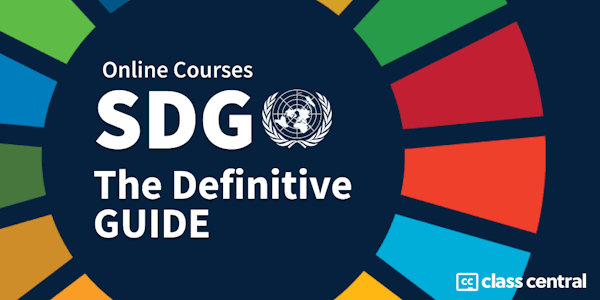Business and environmental sustainability are not natural bedfellows. Business is about making money. Sustainability is about protecting the planet. Business is measured in months and quarters. Sustainability often requires significant short term costs to secure a sometimes uncertain long-term benefit. To some activists, all executives are exploitative, selfish one percenters. To some executives, all activists are irresponsible, unyielding extremists.
And yet engaging with the issue isn’t optional – all businesses must have a strategy to deal with sustainability and, like any strategy, this involves making choices.
This Strategy and Sustainability course based on Rosenberg's recently published book by Palgrave (http://www.palgrave.com/la/book/9781137501738) that encourages learners to filter out the noise and make those choices in a hard-nosed and clear-eyed way. Prof. Rosenberg’s nuanced and fact-based point of view recognizes the complexity of the issues at hand and the strategic choices businesses must make. He blends the work of some of the leading academic thinkers in the field with practical examples from a variety of business sectors and geographies and offers a framework with which senior management might engage with the topic, not (just) to save the planet but to fulfill their short, medium and long-term responsibilities to shareholders and other stakeholders.
This course promises to be both engaging and thought-provoking, aimed at anyone who wishes to gain a deeper understanding of a subject that is no longer perceived as a choice but a necessity for future managers and business leaders alike.
Overview
Syllabus
- Course Overview & Week 1: Business & the Environment
- Welcome! Before starting today's video lectures, please have a look at the course syllabus below. In this first session, we'll explore six fundamental differences between how, in my view, CEOs and board members think about the impact of business on the environment and how environmental activists, lobbyists, journalists, and legislators think about the same ideas. The session also deals with the evolution of environmental concern over the last 60 years and how business has responded. Objectives: To understand the different mindset that business has with respect to other parts of civil society and develop an appreciation for the relatively rapid evolution that has occurred in the relationship between business and the environment in the last 60 years.
- Week 2 - Strategic Issues
- This session calls out the strategic issues in which environmental sustainability plays a key role, such as securing a license to operate, dealing with competition, and shaping consumer and societal perception. Learning Objectives: To dig into the different ways in which the issue of environmental sustainability becomes a subject for business strategy.
- Week 3 - Strategic Options
- This session first introduces the idea of environmental sensibility which will be different for companies in different business sectors and in different parts of the world. It then develops six strategic approaches that businesses might follow according to the degree to which they choose to comply with or go beyond legislation. Learning Objectives: To understand the idea of environmental sensibility and to explore different levels of response. In addition, learners will be able to determine the right approach for specific firms in a specific sector and place.
- Week 4 - Environmental Interest Groups
- Part of the issue in choosing a strategy to deal with environmental issues is to fully understand the broad spectrum of environmental interest groups. This session explores how the movement took off, distinguishing between four types of groups and examining how business might consider interacting with them (and vice versa). Learning Objectives: To explore the nature of four different types of environmental interest groups such that their motivations and behaviors can be better understood.
- Week 5 - Differences Across Industries and Around the World
- This session explores differences across business sectors including automotive, oil & gas, fast-moving consumer goods, mining, and IT/consumer electronics. We will also contrast the situation in the United States with Europe, China, India, and Africa. Learning Objectives: To underline the importance of adapting a specific firm’s strategy to its sector, its geographic scope and even the nature of its ownership and governance structure prior to developing a specific strategic response.
- Week 6 - How to develop a sustainability strategy
- This session presents an integrated framework for working through the issues introduced in the other sessions in order to develop a strategy. This involves understanding the firm’s past and present, looking ahead with a 10–20-year time horizon; quantifying, to the degree possible, the cost and benefits of different options; and making sure that the entire organization – from the board of directors down to line management – understands the direction chosen. Learning Objectives: To go through the critical steps required to build a robust strategy for dealing with environmental sustainability in a specific company or institution.
Taught by
Mike Rosenberg




